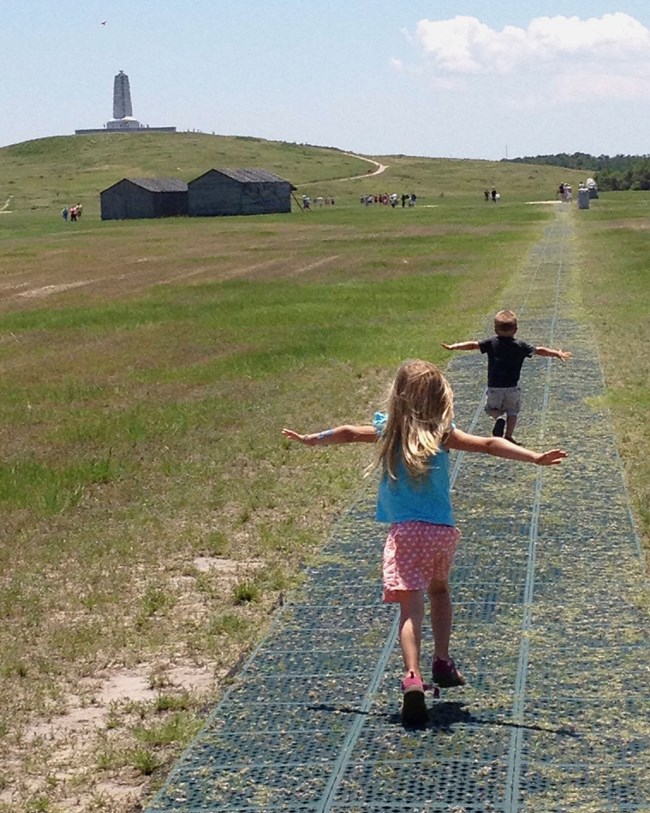Last updated: July 18, 2024
Article
NPS Geodiversity Atlas—Wright Brothers National Memorial, North Carolina
Geodiversity refers to the full variety of natural geologic (rocks, minerals, sediments, fossils, landforms, and physical processes) and soil resources and processes that occur in the park. A product of the Geologic Resources Inventory, the NPS Geodiversity Atlas delivers information in support of education, Geoconservation, and integrated management of living (biotic) and non-living (abiotic) components of the ecosystem.

Introduction
Wright Brothers National Memorial was originally designated on 2 March 1927 as Kill Devil Hill Monument National Memorial; it was transferred to the NPS from the War Department on 10 August 1933 and re-designated as Wright Brothers National Memorial on 1 December 1953 (NPS 2005). The park, which commemorates the first successful controlled power flight at the site where it occurred in 1903, is located in Kill Devil Hills, North Carolina, and comprises 173 ha (428 ac) (NPS 2005).
Geologic Setting
Wright Brothers National Memorial is located the North Carolina barrier islands which are very young in terms of geologic time. The geologic history occurred within the Cenozoic Era (the past 66 million years). The geologic story of 3 NPS units: Cape Hatteras National Seashore, Fort Raleigh National Historic Site, and Wright Brothers National Memorial is one of cyclic rise and fall of relative sea level. The geologic framework controls the sediments available to the modern barrier islands, and the ways in which the islands respond to natural and anthropogenic processes. The oldest known parts of the Outer Banks, including the portion currently blocking the mouth of Albemarle Sound where Wright Brothers National Memorial is located, were formed less than 3,000 years ago (Culver et al. 2008b).
Regional Geology
Wright Brothers National Memorial is a part of the Coastal Plain Physiographic Province and shares its geologic history and some characteristic geologic formations with a region that extends well beyond park boundaries.
- Scoping summaries are records of scoping meetings where NPS staff and local geologists determined the park’s geologic mapping plan and what content should be included in the report.
- Digital geologic maps include files for viewing in GIS software, a guide to using the data, and a document with ancillary map information. Newer products also include data viewable in Google Earth and online map services.
- Reports use the maps to discuss the park’s setting and significance, notable geologic features and processes, geologic resource management issues, and geologic history.
- Posters are a static view of the GIS data in PDF format. Newer posters include aerial imagery or shaded relief and other park information. They are also included with the reports.
- Projects list basic information about the program and all products available for a park.
Source: NPS DataStore Saved Search 3401. To search for additional information, visit the NPS DataStore.

Related Links
Related Articles
Wright Brothers National Memorial
National Park Service Geodiversity Atlas
The servicewide Geodiversity Atlas provides information on geoheritage and geodiversity resources and values within the National Park System. This information supports science-based geoconservation and interpretation in the NPS, as well as STEM education in schools, museums, and field camps. The NPS Geologic Resources Division and many parks work with National and International geoconservation communities to ensure that NPS abiotic resources are managed using the highest standards and best practices available.
